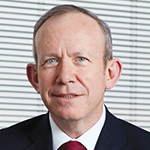By LISA EISENHAUER
When a nursing leader at a hospital within the Bon Secours Mercy Health system observed a nursing resident withstanding insults and slurs hurled by a patient, she asked him how long he had been enduring that treatment.

Amornkit
"And his response was, 'Oh, I'm used to this, this happens all the time, not just with this patient, but other patients I've seen, too,'" said Pavarisa Amornkit, the system's program manager for diversity and inclusion.
The nursing leader informed the new nurse, a person of color, that the abusive treatment was not OK and he could request to be removed from the care team of patients whose behavior toward him is offensive.

Murray
Kathleen Murray, manager of learning and development at Benedictine, said residents at some of the continuum-of-care system's facilities at times have rejected the assistance of care providers and tried to shame those staffers in front of others based on their skin color, accent, tattoos or fears about their sexual orientation.
In at least one case, a resident reported abuse by a staff person. After investigating, it was determined that there was no abuse but rather the resident having racist views toward that staff person that was the genesis of the complaint. "For the most part our staff enjoy great relationships with our residents but biased and racist behavior is a problem that we definitely have to deal with," Murray said.

McCruden
Amornkit and Murray joined Patrick McCruden, chief mission integration officer at SSM Health, as the featured speakers at a webinar May 18 titled "Handling Racist Behavior by Those We Serve." The discussion of how the speakers' systems confront prejudice was sponsored by CHA as part of a series under the umbrella of the association's We Are Called initiative focused on confronting racism by achieving health equity.
Training and resources
Amornkit shared that Cincinnati-based Bon Secours Mercy Health provides training on biases and racism for all of its 60,000 associates. The system's internal website includes a racial justice and equity resource center with articles, materials and tools about prejudice and how to confront it.
"We also in the training provide the language for our leaders to check in with their associates and colleagues to listen to their experiences, to validate them, to try to understand because we know that we all don't share the same experiences," Amornkit said.
In addition, she noted that Bon Secours Mercy Health coaches its chaplains and clinical leaders on how to explain to patients that granting requests involving racial, ethnic or other forms of discrimination would conflict with the system's mission and values. If confronted with a belligerent patient, those doing the explanations can advise that the patient has the option to seek care elsewhere.
McCruden said St. Louis-based SSM Health has policies at the system level on how staffers should respond when patients reject care from or lash out at providers based on prejudice. He acknowledged, however, that in practice situations are often complex.
He noted that when there is an incident involving prejudice by a patient, an administrator or a supervisor is called in to explain that bowing to discriminatory requests would go against the system's Catholic identity, which is based in part on the belief that each person is created in the image and likeness of God and has an inherent human dignity.
At the same time, McCruden said, SSM Health is committed to protecting its staffers "so that they're not put into a place where they're going to have to absorb ill behavior from the patient."
Opening a dialogue
The speakers all agreed that there are instances when a patient's request for a different care provider might fall into a gray area because the request is based on the patient's culture or lived experiences. For example, they discussed how people of some religious faiths might insist on being seen only by doctors who are the same gender as they are and African-American patients might be aware of studies showing better care outcomes when they are treated by African-American physicians.
In situations where the motives behind a patient's request for a change of care provider is unclear, McCruden said: "I think you have to have that dialogue with the patient" to ask why the individual is making this request.
He pointed out that systems have to be mindful that incidents involving bias can transcend the ethical realm and move into the legal one. Federal civil rights laws, for example, prohibit employers from reassigning staff based on factors such as race or gender. "The legal backing is there, if you want to use that explanation with patients, that's very appropriate," McCruden said.
Celebrating diversity
Murray said Duluth, Minnesota-based Benedictine is early in its efforts to craft policies addressing patient bias at its eldercare communities. She is leading a task force on the subject.
The group has broken its work into three parts. One is to review the system's admissions documents and policies about resident behavior in terms of respecting staff. The task force is identifying what education and training is needed for staff to respond to prejudiced patients and, if patients act out on their biases, how to educate residents and their families on diversity and inclusion.
Lastly, Murray said Benedictine is looking for opportunities to highlight cultural traditions that celebrate the diversity of its staff. As an example, one community had an altar display created by a Hispanic associate to commemorate the Day of the Dead last fall.
"It's an opportunity to rid people of assumptions and prejudices and get in front of it with exposure," Murray said.